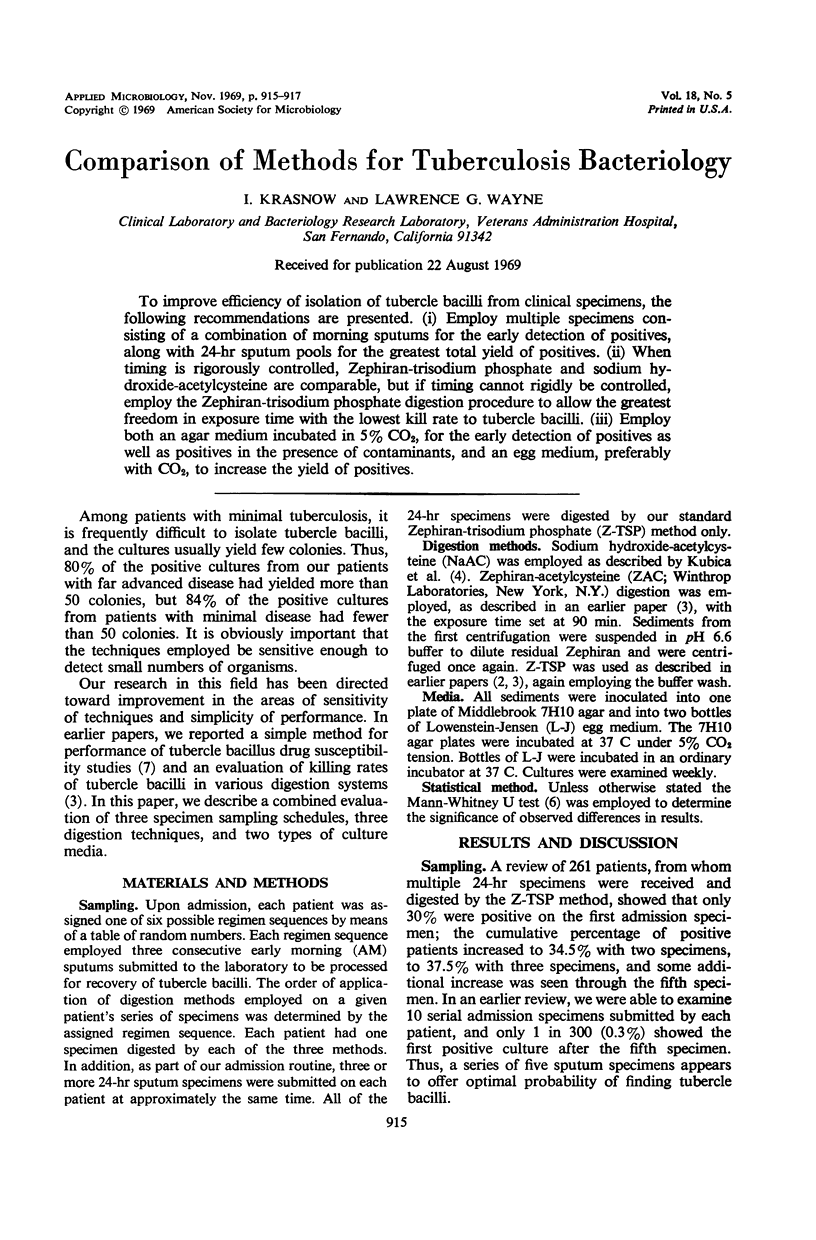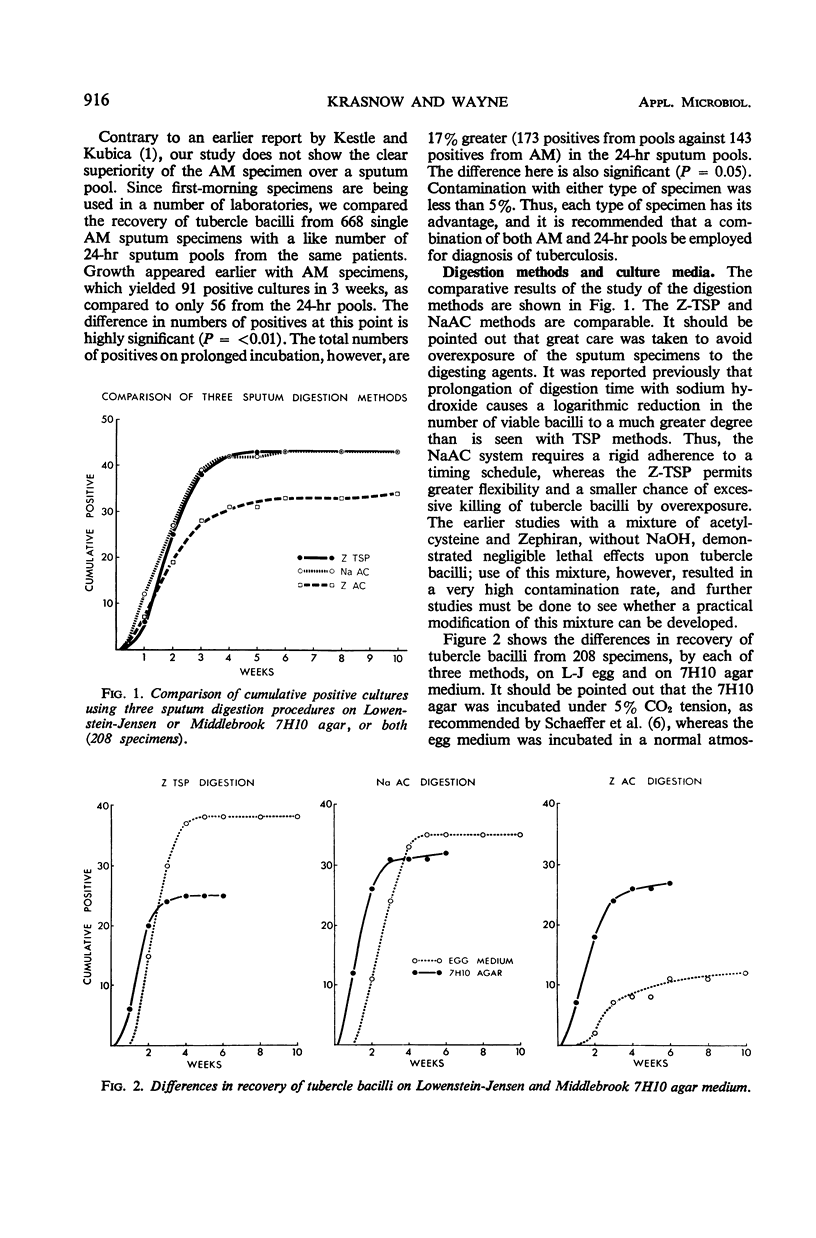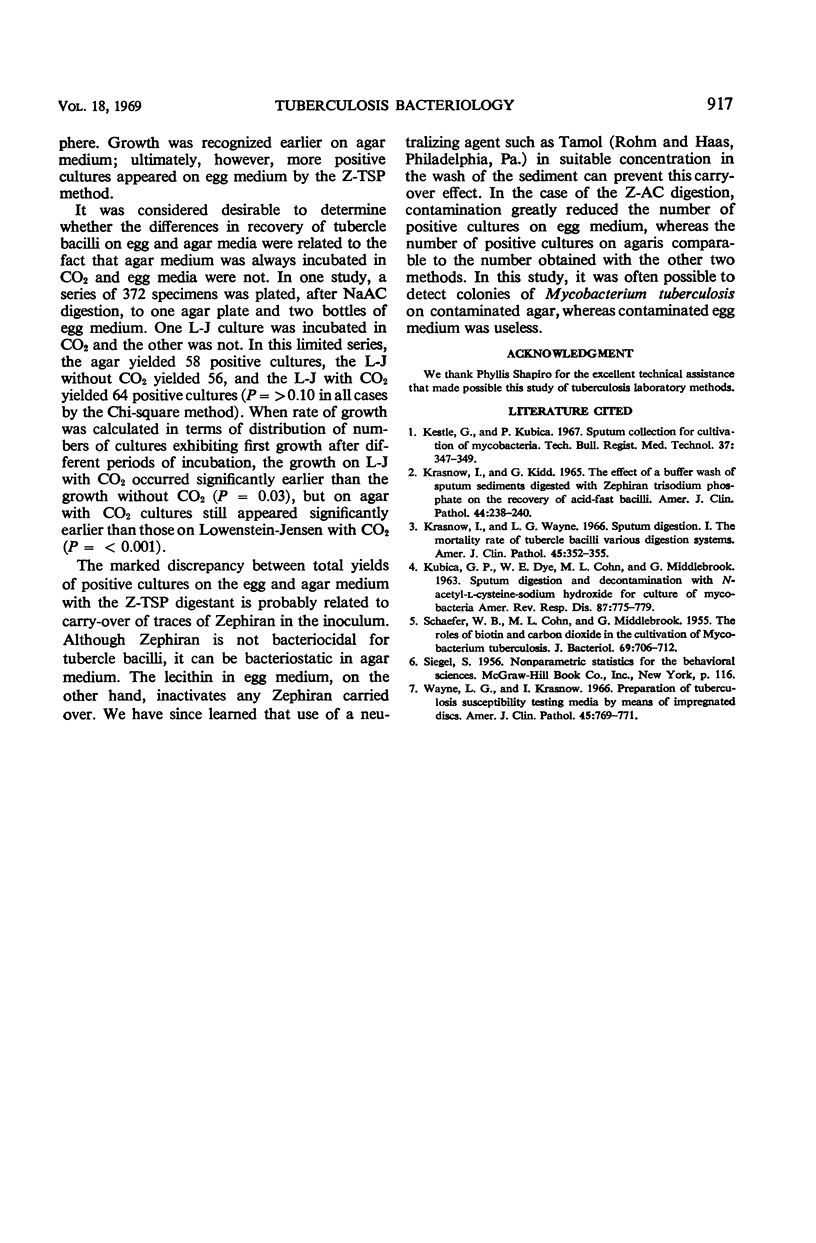Abstract
To improve efficiency of isolation of tubercle bacilli from clinical specimens, the following recommendations are presented. (i) Employ multiple specimens consisting of a combination of morning sputums for the early detection of positives, along with 24-hr sputum pools for the greatest total yield of positives. (ii) When timing is rigorously controlled, Zephiran-trisodium phosphate and sodium hydroxide-acetylcysteine are comparable, but if timing cannot rigidly be controlled, employ the Zephiran-trisodium phosphate digestion procedure to allow the greatest freedom in exposure time with the lowest kill rate to tubercle bacilli. (iii) Employ both an agar medium incubated in 5% CO2, for the early detection of positives as well as positives in the presence of contaminants, and an egg medium, preferably with CO2, to increase the yield of positives.
Full text
PDF


Selected References
These references are in PubMed. This may not be the complete list of references from this article.
- KUBICA G. P., DYE W. E., COHN M. L., MIDDLEBROOK G. Sputum digestion and decontamination with N-acetyl-L-cysteine-sodium hydroxide for culture of mycobacteria. Am Rev Respir Dis. 1963 May;87:775–779. doi: 10.1164/arrd.1963.87.5.775. [DOI] [PubMed] [Google Scholar]
- SCHAEFER W. B., COHN M. L., MIDDLEBROOK G. The role of biotin and carbon dioxide in the cultivation of Mycobacterium tuberculosis. J Bacteriol. 1955 Jun;69(6):706–712. doi: 10.1128/jb.69.6.706-712.1955. [DOI] [PMC free article] [PubMed] [Google Scholar]
- Wayne L. G., Krasnow I. Preparation of tuberculosis susceptibility testing mediums by means of impregnated disks. Am J Clin Pathol. 1966 Jun;45(6):769–771. doi: 10.1093/ajcp/45.6_ts.769. [DOI] [PubMed] [Google Scholar]


